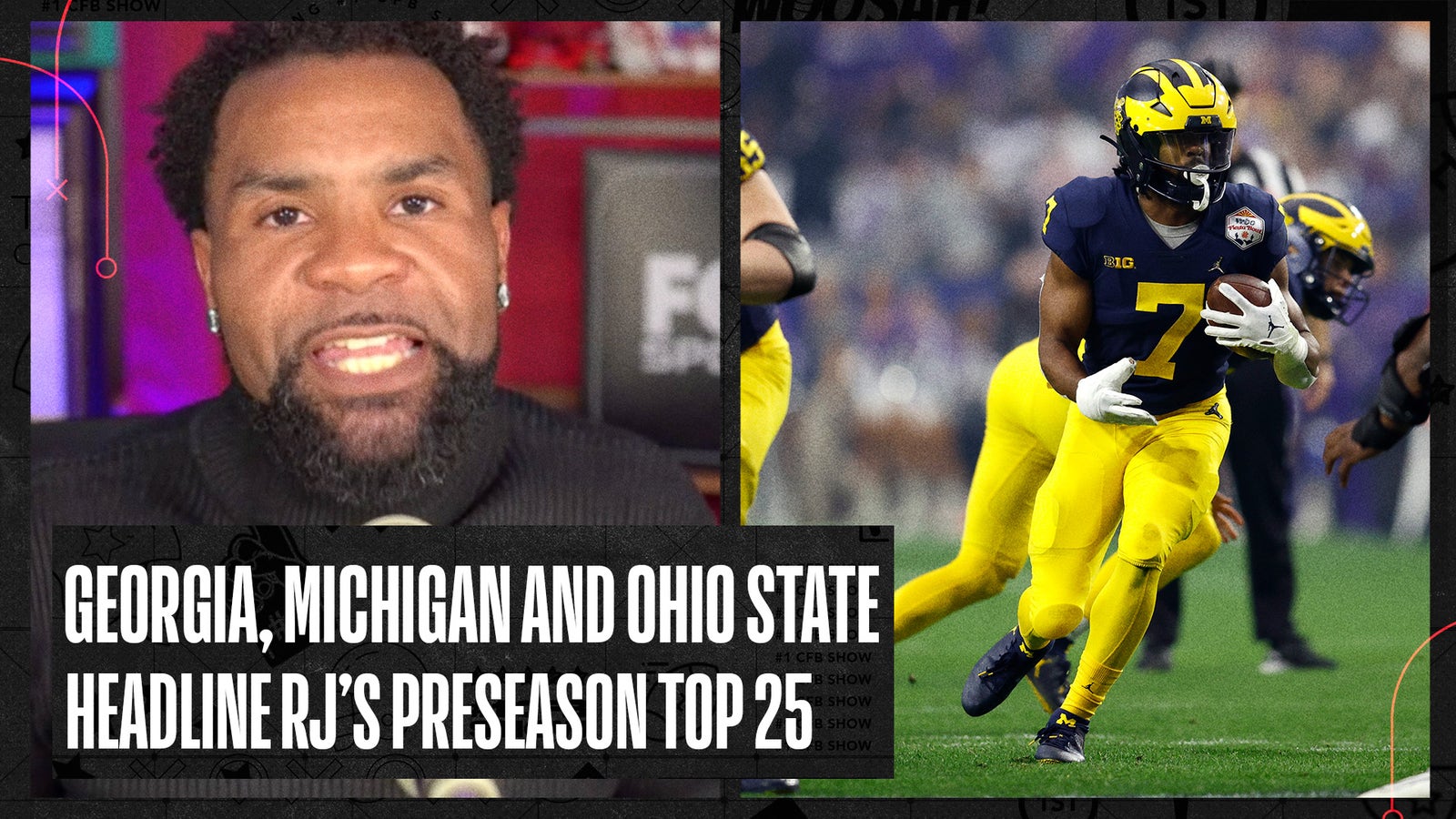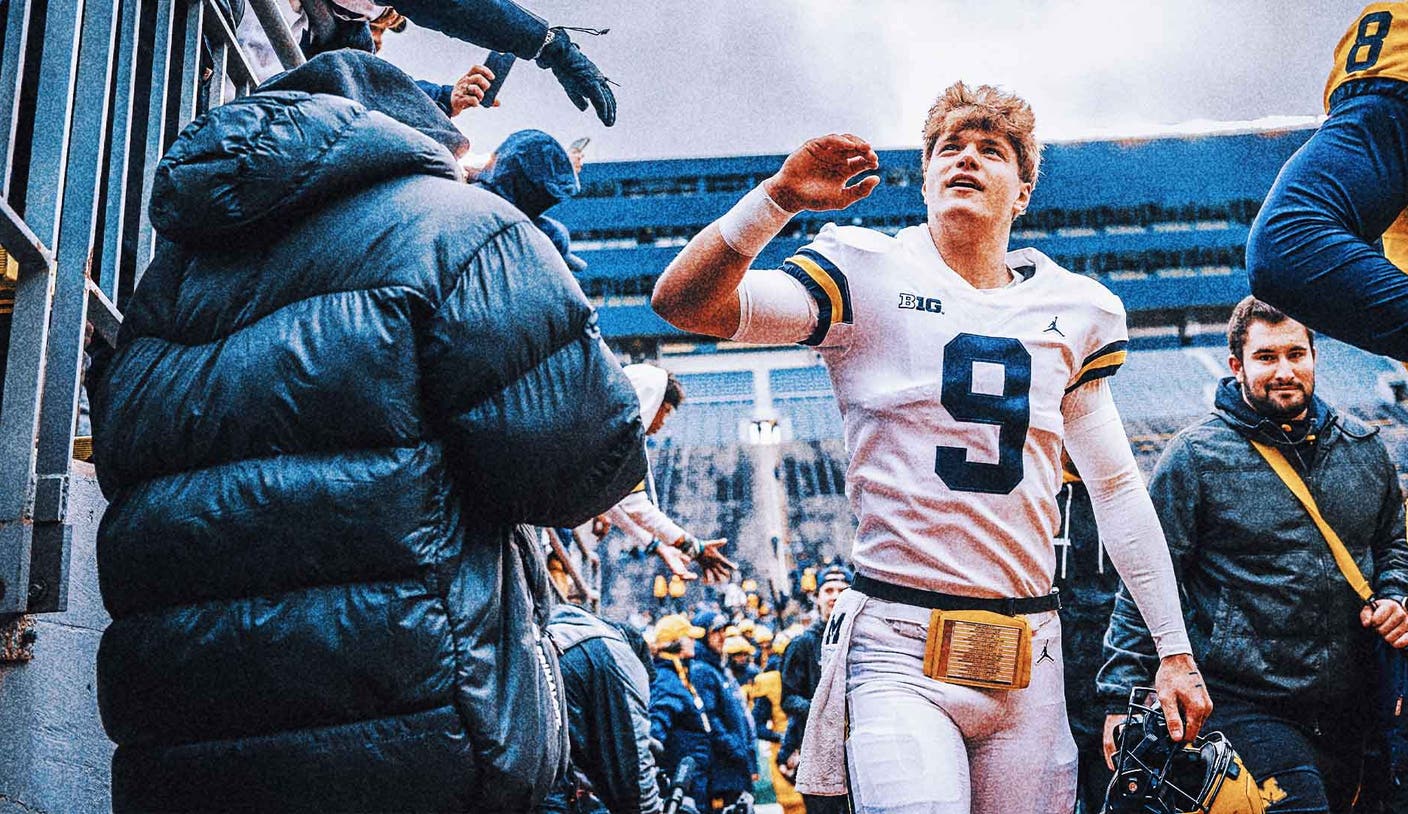
When it comes to Big Ten football, the conversation inevitably ends up focusing on the rivals who rule the conference landscape — Michigan and Ohio State.
And that’s understandable. The conference championship has been claimed by one of those two programs for six straight years, after all, and both competed in the four-team College Football Playoff this past season.
But Penn State has been scratching and clawing to get into the mix, as head coach James Franklin has methodically worked to build a team that can compete with, or even surpass, that duo.
[Does Penn State have the pieces? How James Franklin built for this moment]
Is this the year Franklin and Penn State make it happen?
FOX Sports college football experts RJ Young, Michael Cohen and Bryan Fischer are here to weigh in on all angles of the topic.
On paper, this is the most talented roster James Franklin has ever had, so the question is simple: Will Penn State get over the hump and reach either the Big Ten Championship game or the College Football Playoff this season?
RJ Young: It is certainly one of the most talented teams Franklin has ever enjoyed. The only real question is can he get enough out of quarterback Drew Allar, who has been the most talented Penn State player at his position for two years now.
Bryan Fischer: Not only is this the most talented roster Franklin has had in Happy Valley, but it’s also arguably the best roster that can mount a challenge to the Michigan-Ohio State duopoly that has dominated the Big Ten East over the past several years.
Left tackle Olu Fashanu would have been a top-10 pick in the 2023 NFL Draft had he not opted to come back to school, and young quarterback Allar has as high an upside as any Nittany Lion under center since Kerry Collins. I’ve loved what I’ve seen out of KeAndre Lambert-Smith at wideout, and the enthusiasm Manny Diaz has for his defense is palpable. This team is stacked.
Yet I still have a hard time thinking they or anybody can pull off the elusive sweep (or at least go 1-1) needed against the Buckeyes and the Wolverines during the season. History tells us this is a rare enough occurrence (the last time a team beat both programs was Michigan State in 2015) and the eye test reconfirms how hard it will be for PSU to accomplish it in 2023.
Franklin may well have a top-10 team this season — and should given the talent on hand. That it may only be good enough for second or third in the division however shows just how difficult a task getting over the hump really is.
Michael Cohen: That’s a terrific stat from Bryan to explain just how difficult it is to beat Ohio State and Michigan in the same season, which is why it feels a bit naive to say ‘yes, Penn State can do it’ with any sort of authority.
But what if the Nittany Lions don’t have to? What if this is the year when Ohio State, Michigan and Penn State are so evenly matched that all of them lose to each other, in some form or fashion, so that each program ends its season 11-1 overall and 8-1 in the league? It wasn’t terribly far away from happening in 2022 when the Wolverines went 9-0, the Buckeyes finished 8-1 and the Nittany Lions were 7-2 in Big Ten play.
On paper, Franklin’s team has all the pieces to emulate the winning formula Michigan relied on each of the last two years. Penn State has an improved offensive line with an elite prospect at the unit’s most critical spot. It has one of the most electric running back tandems in the country in Nicholas Singleton and Kaytron Allen to take some pressure off inexperienced quarterback Allar — just as the Wolverines did with both Cade McNamara and J.J. McCarthy. And the Penn State defense, coordinated by Diaz, should be among the best in the country for a second consecutive season.
So while it might be a stretch to think the Nittany Lions can defeat both Michigan and Ohio State in the same season, knocking off one of them is well within the realm of possibility. And if the tiebreakers were to fall in Penn State’s favor, that might be enough to get Franklin back to the Big Ten title game for the first time since 2016.
The Big Ten is loaded with high-level running back duos: Michigan’s Blake Corum and Donovan Edwards, Ohio State’s TreVeyon Henderson and Miyan Williams, Wisconsin’s Braelon Allen and Chez Mellusi, and Penn State’s Singleton and Allen. Where does the Nittany Lions’ duo rank in this hierarchy?
Bryan: If Corum is fully healthy, I’d have a hard time believing anybody in the country, much less Penn State, would have a better duo in the backfield than what they have in Ann Arbor. Both of those guys are not only capable of being a lead back at the highest level, but they’re both equally capable of taking over a game with just a few touches. That’s rare to have in one tailback, much less two.
Still, Singleton-Allen is a heck of a combination after bursting onto the scene as true freshmen and nearly combining for 2,000 yards and 22 touchdowns. If they can add a little bit extra to their game, from pass protection to being more dangerous in the passing game, then the sky is the limit. As is, however, they’re still a solid second place in the Big Ten with the Ohio State pair nipping at their heels.
Michael: What Bryan hinted at regarding the health of these duos is perhaps the best lens through which to answer the question. Most people would agree that Corum (1,463 yards and 18 TDs last season) and Edwards (991 yards and seven TDs) are the most talented pair in the Big Ten. Corum would have been a mid-round pick in last year’s NFL Draft had he decided to leave school early, and Edwards has already hinted at plans to turn pro after the 2023 campaign. Marrying their combination of top-end speed and elusiveness with what could be one of the best offensive lines in the country for a third straight year seems like a surefire home run.
But when it comes to staying healthy, Penn State’s duo of Singleton and Allen was the only tandem in which both players appeared in every game last season. Michigan’s pairing of Corum and Edwards made 23 of a possible 28 combined appearances in 2022, and both players needed offseason surgery, including more than one procedure for the latter. Ohio State’s pairing of Henderson and Williams made 19 of a possible 26 combined appearances with the former having season-ending surgery last fall. And Wisconsin’s pairing of Allen and Mellusi made 21 of a possible 26 combined appearances with the latter having in-season surgery after breaking his wrist last October.
The Wolverines might have more talent than anyone else in the Big Ten, but the edge in durability goes to Penn State based on last year’s body of work.
RJ: Edwards’ ability to come through in big games — particularly in the Big Ten title game — secures the top spot for the firm that is Corum and Edwards.
However, after both Henderson and Williams sustained injuries that forced them to miss games, it’s not hard to think about Singleton and Allen as the second-best duo in the conference. Still, I can’t wait to see what Allen and Mellusi have to say after another season together.
For so much of James Franklin’s tenure, the Nittany Lions have been trapped with Michigan and Ohio State in the Big Ten East. Year in and year out, any potential path to the league’s championship game runs through either Ann Arbor or Columbus. What do you see as the long-term outlook for Penn State in an expanded Big Ten?
Michael: Assuming the Big Ten doesn’t revert to a scheduling model that includes divisions following the newest West Coast additions of Oregon and Washington, the Nittany Lions should be thrilled to escape from the snake pit better known as the Big Ten East. Franklin is 1-8 against Ohio State and 3-6 against Michigan since arriving at Penn State in 2014, and his average margin of defeat in those games is 10.4 points against the Buckeyes and 19.8 points against the Wolverines.
It’s also important to remember that Penn State was given zero protected rivalries when the Big Ten introduced its initial 2024 scheduling model known as Flex Protect Plus. And while the league’s format will certainly be revised to accommodate two more teams in the Pacific Time Zone, it stands to reason that most of the protected rivalries can still be safeguarded for the future. That means Franklin’s team is likely to have more year-to-year variance in its schedule than other teams, and that kind of randomization over time should lead to larger fluctuations in difficulty from one season to the next. Some years, the dice will simply roll in Penn State’s favor.
The Nittany Lions already had the infrastructure, resources and national recruiting base to be a perennial contender in an expanded 12-team playoff whether the Big Ten did away with divisions or not. Now they will escape from guaranteed matchups against Ohio State and Michigan while avoiding the kinds of difficult rivalry games that can hamstring a program. That should be a welcome reprieve for Franklin & Co. next season.
RJ: With divisions gone, it’s not hard to see Penn State playing in the Big Ten title game more regularly in the future. Add to that the expansion of the CFP to 12 teams, and we could enter a new golden era of Penn State football — perhaps even its first conference title since 2016.
Bryan: Perhaps no team in the country will benefit from the combination of divisions going away in the Big Ten combined with a new 12-team playoff more than Penn State will. So often under Franklin, we’ve seen the Nittany Lions peak later in the season after already suffering a loss to either Michigan or Ohio State. Soon, college football is about to go from underappreciating teams that can get better as the year goes on to suddenly rewarding them as they remain in the national title chase for far longer.
Regular playoff appearances, and winning games in said playoff, should not only become the goal but a regular occurrence under Franklin come 2024 and beyond. This has been one of the stronger programs of the past decade, and it certainly seems like the coaching staff and administration are moving to take advantage of the new world order in the sport in ways they previously could not.
That said, I can’t help but think that’s simply moving the goalposts slightly down the field in the long run. There are still disadvantages PSU has to deal with that are not present for other title contenders like Georgia, Alabama or Clemson. The same is true for some of their old and new conference peers like Ohio State and USC. The lack of divisions will help tremendously in terms of perception by not having an automatic one or two losses from those trips to Ann Arbor and Columbus but the overall situation the Nittany Lions find themselves — being good but not great enough — still will likely apply well beyond next season.
RJ Young is a national college football writer and analyst for FOX Sports and the host of the podcast “The Number One College Football Show.” Follow him on Twitter at @RJ_Young and subscribe to “The RJ Young Show” on YouTube.
Michael Cohen covers college football and basketball for FOX Sports with an emphasis on the Big Ten. Follow him on Twitter at @Michael_Cohen13.
Bryan Fischer is a college football writer for FOX Sports. He has been covering college athletics for nearly two decades at outlets such as NBC Sports, CBS Sports, Yahoo! Sports and NFL.com among others. Follow him on Twitter at @BryanDFischer.
COLLEGE FOOTBALL trending

Get more from College Football Follow your favorites to get information about games, news and more










